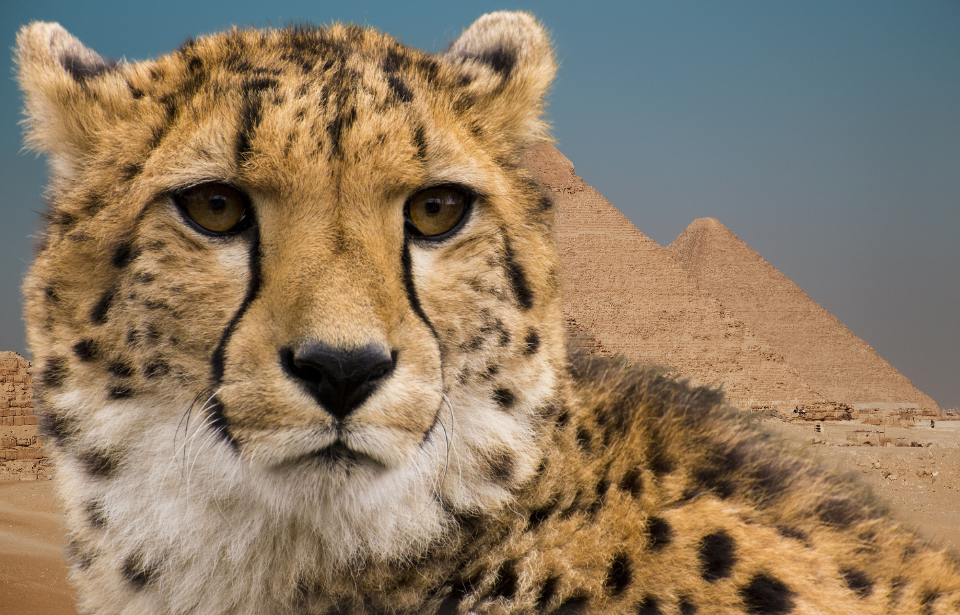The reverence the ancient Egyptians had for felines is well established. Not only were they profoundly useful around the house as a type of pest control, keeping down incursions by creatures like snakes and other vermin, but they became associated with many Egyptian gods over the centuries. One of the more interesting species to be associated with the ancient Egyptians is the cheetah, a larger wild cat that joined hunting parties.
Cats were revered in ancient Egypt
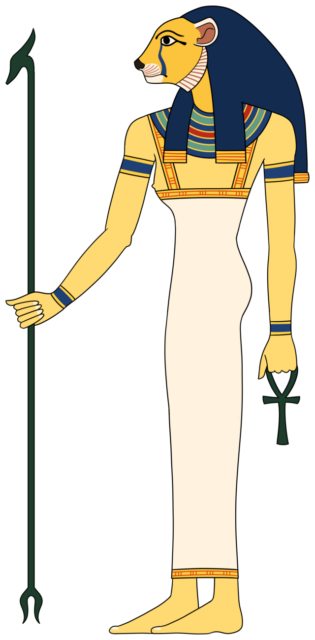
While cats weren’t in and of themselves considered divine, they were considered to be physical representations of feline deities, and to harm or kill one was seen as an attempt to harm a god. As a result, doing so, even by accident, was a capital crime.
According to the Cat Museum in San Francisco, the best known of these gods was Bastet, or Bast, who’s strongly associated with domestic house cats. There was also the lion-headed goddess Sekhmet, represented by the intense heat of the midday sun, who was both a warrior goddess and a healer.
Before either of these goddesses, however, there was Mafdet, who was, perhaps, the first of the feline goddesses. Mafdet was the goddess of legal justice and was also said to protect against scorpions and snakes. A stone vase was found in a tomb at Abydos, showing a representation of Mafdet as a large cat, most likely a cheetah.
Keeping cheetahs as house pets
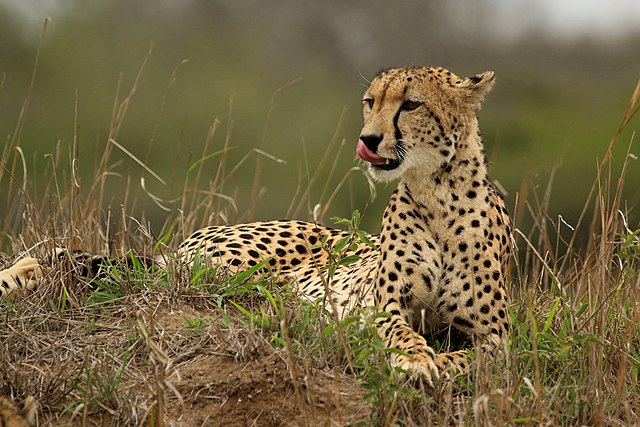
With all those divine felines, it’s no surprise that ancient Egyptians were obsessed with cats. Many kept them as pets, even the big ones. Egyptian royalty and other high-society types kept large cats, such as lions or cheetahs from Sudan, as house pets. Cheetahs would probably have been much better suited for indoor life than lions, given that an adult cheetah would only get to be about as large as a medium-large dog by today’s standards.
Cheetahs have a generally friendly nature and weren’t particularly afraid of humans, which no doubt made them easier to trap, and there was a trade involved in trapping, taming and training the large cats.
Not only were they sometimes kept as pets, but on the owner’s death they’d be buried along with them, both for companionship and because it was believed the cat’s speed would take the owner’s soul to the afterlife more quickly.
Cheetahs were trained, not domesticated in ancient Egypt
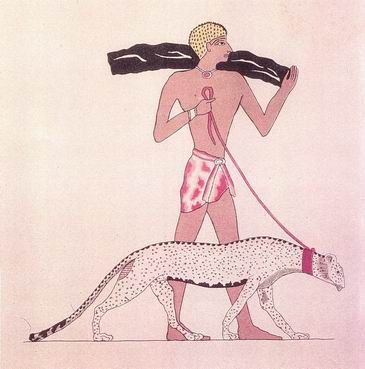
The ancient Egyptians tamed and trained cheetahs for hunting, as well as kept them as pets. They were trained, not domesticated, which suggests a level of intentional breeding and selection that was noticeably absent for a couple of reasons.
One is the aforementioned trade in training adult cats, and another is that cheetahs don’t breed well in captivity. It was preferable to catch wild adult cats, rather than cubs, since adults already had fully-formed hunting skills. That meant that they’d require less training to hunt effectively with men.
Used for sport
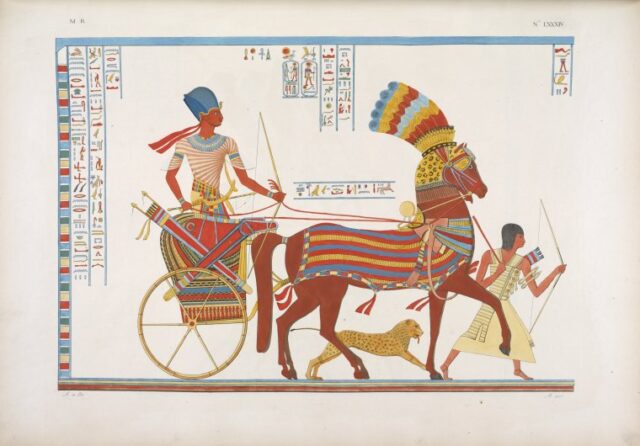
Similarly to hawks, the cats were kept blindfolded in the field, until prey had been flushed out, then the cheetahs would be turned loose to run the prey down. Cheetahs are smaller than the other large cats, but are the fastest land animals in the world. They tire easily, however, and can only sustain their top speed for a few minutes at a time.
Their speed, combined with their excellent daytime eyesight, made them well-suited for the job, and the style of hunting they were used for wouldn’t have over-taxed their stamina. Given the expense and relative difficulty of finding and taming adult cheetahs, however, hunting this way was a sport reserved for the rich and the royal.
More from us: Cleopatra: 8 Intriguing Facts About the Ancient Egyptian Wonder Woman
The low population of cheetahs, combined with the cost and relative difficulty of finding, catching and training them, meant hunting with them was more of a diversionary practice for enjoyment, rather than practicality. Even so, it’s clear the ancient Egyptians held the cheetah in a regard as high as other feline and that they played an integral role in Egyptian life and culture.
